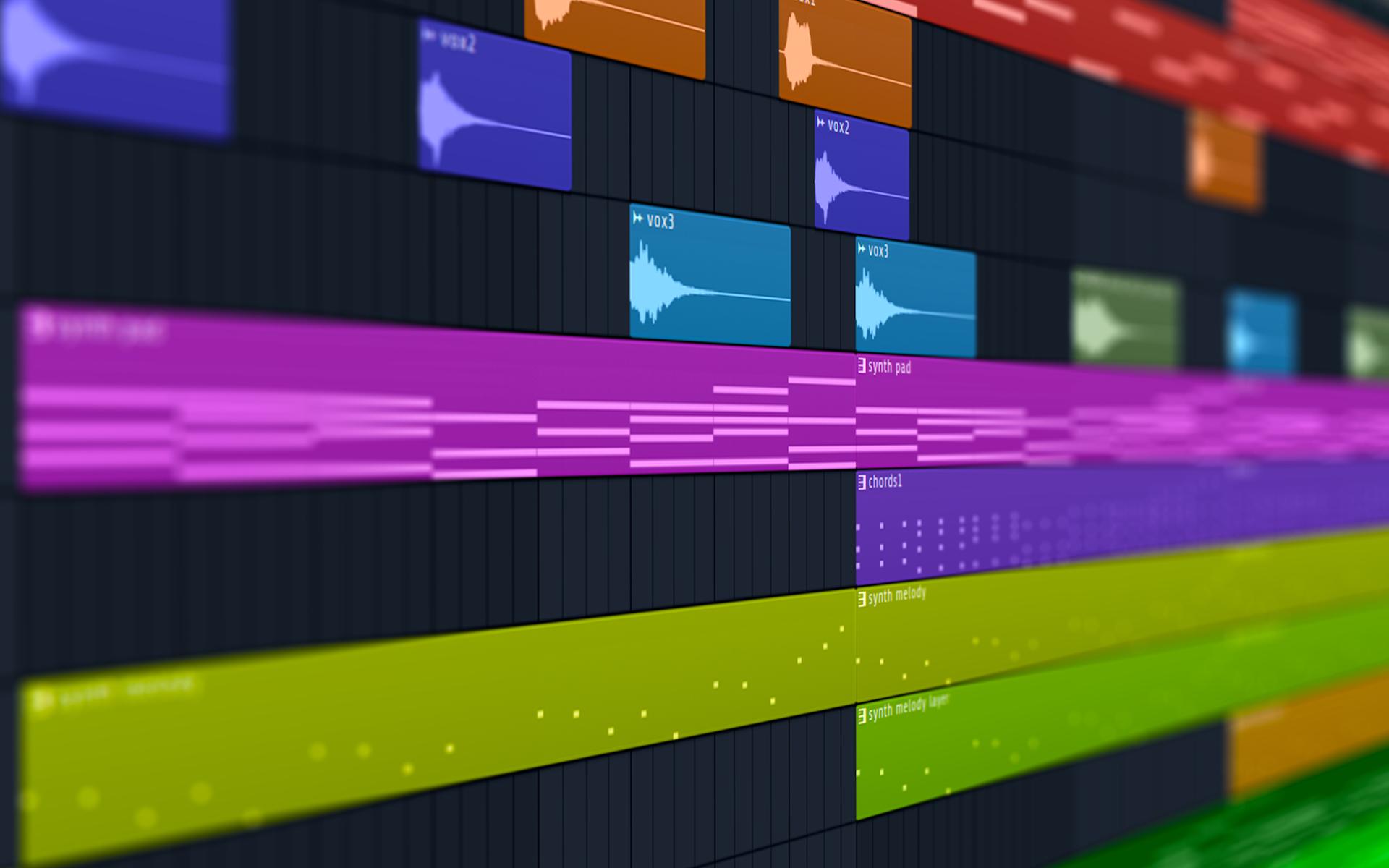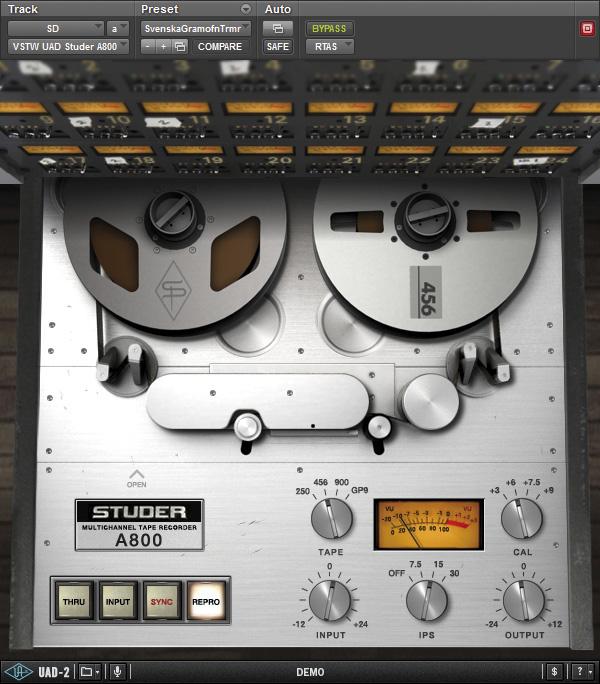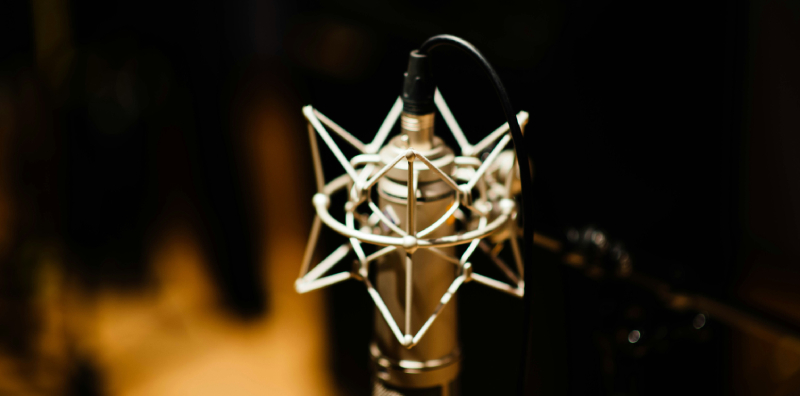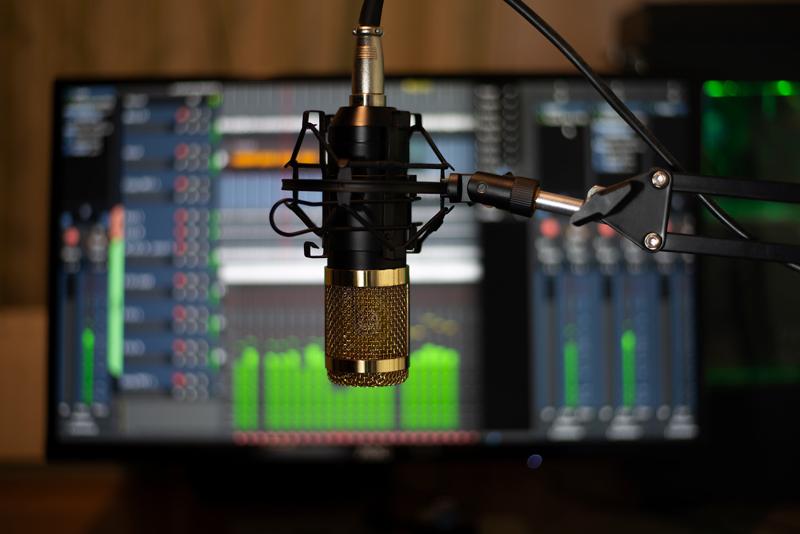Hybrid mixing means the music is mixed using analog audio devices and a DAW at the same time. A mix engineer works with the sound in a DAW using various plugins and also sends it to be processed in analog form. It can be sent to a console, for example, go through various analog devices, and then return to a DAW. Different hybrid mixing setups are possible.
In this article, we’ll explain the advantages of digital and analog processing and how and why we unite all of them in hybrid setups.
What is the difference between analog mixing and digital mixing?
Out of the box mixing is done using only a mixing console, and outboard gears like preamplifiers, equalizers, compressors, other dynamic processors, effects like reverb units and others, and so on.
Analog sound processing works with the sound waves, transforming them into electrical-signal analogs. However, digital audio processing works with a discrete representation of sound waves in the form of samples. The waves are sampled at a certain frequency, for example, 44100 times per second, which is a 44,1 kHz sample rate.
First of all, let’s make sure we understand the basics of how analog world and digital world co-exist in song production and how they are different.
Why analog mixing is great
 Analog mixing is when an engineer processes audio tracks using analog equipment. This type of sound processing interacts directly with the actual waveform, allowing it to pass through electrical audio devices and shaping it in the process.
Analog mixing is when an engineer processes audio tracks using analog equipment. This type of sound processing interacts directly with the actual waveform, allowing it to pass through electrical audio devices and shaping it in the process.
Out of the box work requires a lot of studio space and time, and the mix engineer must have advanced skills to work with it. It’s especially hard if it’s your home studio and you need setups to record, and then process your songs, for which you require a number of tools like preamps, small mixer, different compressors, compression to mix buss, for example, eq, fx, and others.
The strong points of hardware that can make you choose analog mixing are:
- Each external processor adds unique warmth and harmonics to the sound.
- You work with the actual waveform without losing any information for encoding.
- The effects of some devices can not be reproduced using existing digital plugins.
- You can use knobs and faders to “feel the voltage” and control the sound with your hands.
- This is a legendary way of making music.
The benefits of digital music processing
 Digital mixing happens inside a computer, with sound waves represented by a sequence of numbers. A setup for digital mixing is easy, takes much less space than the analog options, can be mobile, and provides lots of opportunities for working with sound.
Digital mixing happens inside a computer, with sound waves represented by a sequence of numbers. A setup for digital mixing is easy, takes much less space than the analog options, can be mobile, and provides lots of opportunities for working with sound.
Why do people mix songs in the box?
- It’s convenient and can be done quicker than out of the box mixing.
- The hardware set is much more affordable for digital work.
- The processing is precise and creates less noise.
- The equipment doesn’t take up much space.
- It gives you many more options and opportunities to shape the sound.
- Many qualities and types of sound editing that digital processing allows are impossible to reproduce using analog gear.
As you see, both types of audio processing have unique qualities that the other type does not support. This is why top engineers use a hybrid setup for mixing most of the time. It aims to get both the benefits of analog and digital work.
What are the benefits of hybrid mixing?
In hybrid setups, we combine the benefits of both analog and digital music, making it precise, with low noise, perfectly in tune if we need it, and with hi-tech digital effects if we wish. But at the same time, if we want to add specific analog warmth, harmonics, tape or vinyl qualities of the sound, and other natural outboard gear effects, we can do that as well.
To name just a few advantages of hybrid mixing:
- The benefits include all that is great about both digital and analog sound.
- The tracks are conveniently organized in a DAW.
- The engineer can easily return to editing the song in multitrack when necessary and switch to analog devices when needed.
- All the qualities of digital and analog sound can be achieved.
You can reach all the spectrum: from pure analog quality for your jazz, classic rock, or other songs to a very clean and precise electronic music or other popular styles.
You can give certain elements of your song the necessary sound qualities. For example, you can enhance classic sound features regarding the lead vocal, making it sound the most close-up, expressive, and delicate. You also may create digital effects for certain elements of your composition. The possibilities are endless.
The use of analog emulation in hybrid mixing
Analog emulation plugins can certainly ease the life of a mix engineer by allowing them to emulate some great hardware units working in the box. For many devices, there have been created pretty accurate emulation. Top-rated engineers use plugins, which allow them to save time, manipulating analog effects easily and quickly. Not to mention the high cost of actual hardware prototypes and the room they would take up in the studio.
When you do have to use analog gear
 Emulation plug ins are lifesavers, however, for better or for worse, there are a lot of great legendary pieces that haven’t been and will never be emulated. And they produce some unique sound coloring, you couldn’t create without them, even if you tried.
Emulation plug ins are lifesavers, however, for better or for worse, there are a lot of great legendary pieces that haven’t been and will never be emulated. And they produce some unique sound coloring, you couldn’t create without them, even if you tried.
For top-quality mixing of a track, especially with live instruments and the natural sound of the voice, a mix professional would need to include these pieces of analog gear and create a hybrid setup.
Want a free test mix of your track?
We get it.
That’s why we’ll do a full hybrid (analog + digital) mix of your song —
for free.
No upfront payment. No risk.
You only pay if you’re blown away. And if you are, we’ll slash 40% off the final price.
Nobody else in mixing and mastering offers this.
Why?
Because most studios say yes to every project. We don’t. We only mix what we’re excited about — so send us your best track. If we like it, we’ll mix it like it’s going to the Grammys.
👉 Just drop your name and email to get started.
Hybrid setup explained
Your setup is defined by the equipment you use for mixing and how you connect it. You can add various audio devices. Although there can be an infinite number of setup options, all of them can be roughly divided into two basic categories: those with consoles at the center of them and those without, which use outboard devices as plugins to the DAW.
Setup #1: Hybrid mixing setup with a console in the center
In this option, the mixing process relies on the console and mostly analog workflow. However, you need to use the benefits of digital effects, and your favorite digital plugins. So, you use outboard gears, routing them to the mixing console. Also, you send the sound to your computer’s DAW, add the plugins you like, and then send the sound back to the console.
Setup #2: Hybrid mixing setup with a digital mixer in the center
This setup option allows you to do most of your mixing work inside the computer with a digital mixer. However, to not lose the precise touch of a mixing console, you may want a controller (or control surface) that allows you to use knobs and faders with your DAW.
At the same time, routing the necessary outboard gears like an outboard compressor to your computer using an audio interface, you can receive perfect analog sound.
As I said earlier, by connecting digital and analog processing, you can reach outstanding sound qualities. The final mix can embrace the listener with unique analog sound colors, and maintain all the advantages of digital work at the same time.
Hybrid mixing with Major Mixing
We use hybrid setups for mixing all the time in our work, and we love it for the freedom it gives to our audio engineers.
Using hybrid processing, our professional engineers can implement different song ideas and sound features, and create a mix that can compete in the Billboard charts.
Our Upgrade Mixing and Mastering service will allow you to receive an industry-quality mix using all the digital and analog resources, including our special consulting service and other perks.
Your song deserves professional quality mixing and mastering, let the world hear it with its best sound. So, if your recording needs mixing and mastering, contact us, and we’ll help you boost your career as an artist.









